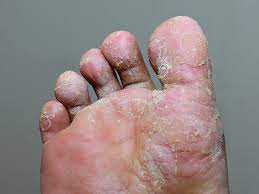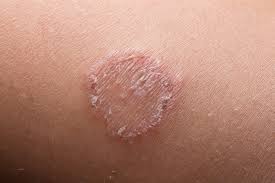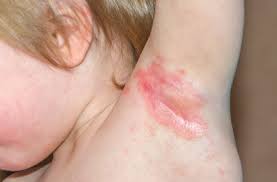Fungal infection Treatment
 Fungal infections are a common problem that affects many people.
Fungal infections are a common problem that affects many people. They can occur on the skin, nails, and in the body's internal organs.
Fungal infections can be caused by a variety of different types of fungi, including yeasts and molds.
Some of the most common symptoms of fungal infections include itching, redness, and flaking of the skin.
In more severe cases, fungal infections can cause painful cracking and peeling of the skin, as well as thick, discolored nails.
Some of the most common symptoms of fungal infections include itching, redness, and flaking of the skin.
In more severe cases, fungal infections can cause painful cracking and peeling of the skin, as well as thick, discolored nails.
Types of fungal infections
 Athlete's foot Also known as tinea pedis, is a common fungal infection that primarily affects the skin on the feet.
Symptoms of athlete's foot include itching, burning sensations, redness, and peeling skin on the feet, particularly between the toes.
In some cases, blisters or ulcers may develop, leading to further discomfort.
Fortunately, athlete's foot can often be effectively treated with over-the-counter antifungal creams or powders.
It's important to follow the recommended treatment regimen and maintain good foot hygiene to prevent recurrence.
Athlete's foot Also known as tinea pedis, is a common fungal infection that primarily affects the skin on the feet.
Symptoms of athlete's foot include itching, burning sensations, redness, and peeling skin on the feet, particularly between the toes.
In some cases, blisters or ulcers may develop, leading to further discomfort.
Fortunately, athlete's foot can often be effectively treated with over-the-counter antifungal creams or powders.
It's important to follow the recommended treatment regimen and maintain good foot hygiene to prevent recurrence.
 Ringworm (tinea corporis):
Ringworm, despite its name, is not caused by a worm but rather a fungal infection.
Ringworm can affect various parts of the body, including the skin, scalp, nails, and groin area.
Ringworm is highly contagious and can be transmitted through direct contact with an infected person, animal, or contaminated objects such as clothing, towels, or combs.
The characteristic symptom of ringworm is a red, circular rash that may be itchy, scaly, and raised at the edges.
Treatment for ringworm typically involves the use of antifungal medications
Ringworm (tinea corporis):
Ringworm, despite its name, is not caused by a worm but rather a fungal infection.
Ringworm can affect various parts of the body, including the skin, scalp, nails, and groin area.
Ringworm is highly contagious and can be transmitted through direct contact with an infected person, animal, or contaminated objects such as clothing, towels, or combs.
The characteristic symptom of ringworm is a red, circular rash that may be itchy, scaly, and raised at the edges.
Treatment for ringworm typically involves the use of antifungal medications
 Jock itch
Jock itch, also known as tinea cruris, is a common fungal infection that affects the groin area.
It is caused by the same group of fungi that cause athlete's foot and ringworm.
Symptoms of jock itch include redness, itching, a rash in the groin area, and sometimes a burning sensation.
The infection is often caused by excessive moisture, friction, or poor hygiene in the groin region.
Jock itch can be effectively treated with antifungal creams or powders, along with good hygiene practices and keeping the affected area clean and dry.
Jock itch
Jock itch, also known as tinea cruris, is a common fungal infection that affects the groin area.
It is caused by the same group of fungi that cause athlete's foot and ringworm.
Symptoms of jock itch include redness, itching, a rash in the groin area, and sometimes a burning sensation.
The infection is often caused by excessive moisture, friction, or poor hygiene in the groin region.
Jock itch can be effectively treated with antifungal creams or powders, along with good hygiene practices and keeping the affected area clean and dry.
 Yeast infections:
Yeast infection, also known as candidiasis, is a common fungal infection caused by an overgrowth of Candida yeast.
It can occur in various parts of the body, such as the vagina (vaginal yeast infection), mouth (oral thrush), or skin folds.
Symptoms of a yeast infection may include itching, redness, swelling, and abnormal discharge.
Risk factors include weakened immune system, hormonal changes, antibiotic use, and poor personal hygiene.
Treatment for yeast infections typically involves antifungal medications, such as creams or oral tablets, along with lifestyle adjustments and good hygiene practices.
Yeast infections:
Yeast infection, also known as candidiasis, is a common fungal infection caused by an overgrowth of Candida yeast.
It can occur in various parts of the body, such as the vagina (vaginal yeast infection), mouth (oral thrush), or skin folds.
Symptoms of a yeast infection may include itching, redness, swelling, and abnormal discharge.
Risk factors include weakened immune system, hormonal changes, antibiotic use, and poor personal hygiene.
Treatment for yeast infections typically involves antifungal medications, such as creams or oral tablets, along with lifestyle adjustments and good hygiene practices.
 Nail fungus (onychomycosis):
Nail fungus, also known as onychomycosis, is a common fungal infection that affects the nails.
It is caused by various types of fungi, particularly dermatophytes, which thrive in warm and moist environments.
Symptoms of nail fungus include thickened, discolored, brittle nails that may become distorted or separated from the nail bed.
Risk factors include wearing tight shoes, having damaged nails, prolonged exposure to damp environments, and compromised immune system.
Treatment options for nail fungus include oral antifungal medications, topical antifungal solutions, and in severe cases, surgical nail removal. Consistency and patience are important as treatment can take several months for complete resolution.
Nail fungus (onychomycosis):
Nail fungus, also known as onychomycosis, is a common fungal infection that affects the nails.
It is caused by various types of fungi, particularly dermatophytes, which thrive in warm and moist environments.
Symptoms of nail fungus include thickened, discolored, brittle nails that may become distorted or separated from the nail bed.
Risk factors include wearing tight shoes, having damaged nails, prolonged exposure to damp environments, and compromised immune system.
Treatment options for nail fungus include oral antifungal medications, topical antifungal solutions, and in severe cases, surgical nail removal. Consistency and patience are important as treatment can take several months for complete resolution.
Who is at the risk of developing a fungal rash ?
You may have a higher risk for developing a skin rash if you:- Have a weakened immune system
- Take long-term or high-dose antibiotics.
- Have excess weight.
- Have diabetes.
- Not drying your skin completely after a shower or wash
- Walking barefoot in shower and wet locations
- If you come into contact with a person or animal with fungal infections.
- Try a new skin care product.
- Experience incontinence (for example, babies getting diaper rashes).
- Sweat heavily.
- Are pregnant.
Fungal Infection Treatment and Symptoms
- Topical antifungal creams or ointments, which are applied directly to the infected area.
- Oral antifungal medication, which is taken by mouth.
- Topical or oral antifungal medications that are used for severe or invasive fungal infections.
Ringworm
It’s a skin infection that’s caused by moldlike fungi that live on the dead tissues of your skin, hair, and nails.The lesion caused by this infection resembles a worm in the shape of a ring, which is why it got its name.






